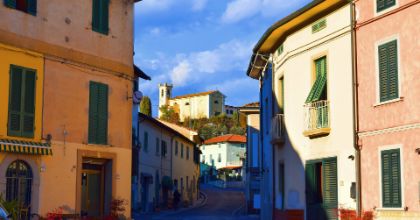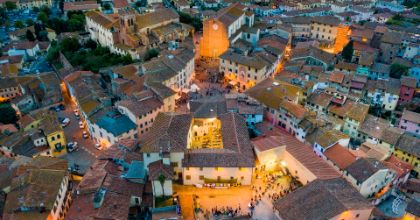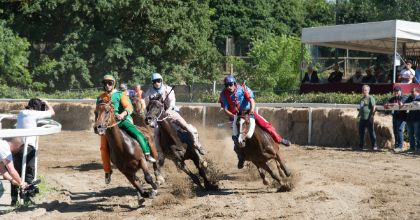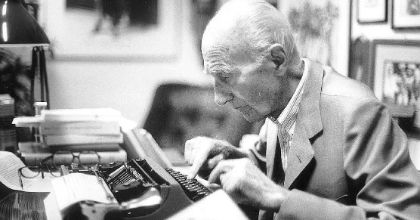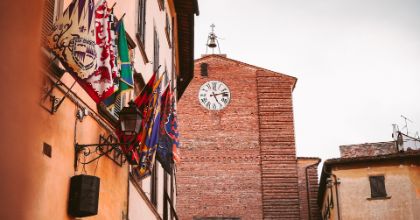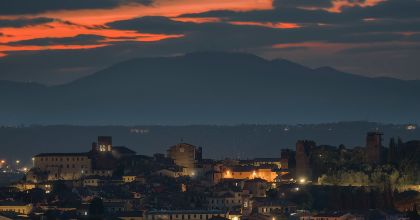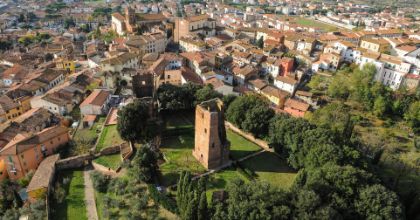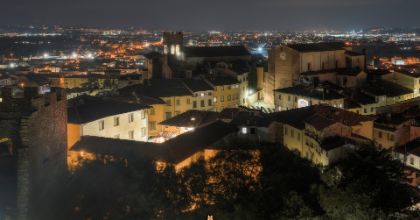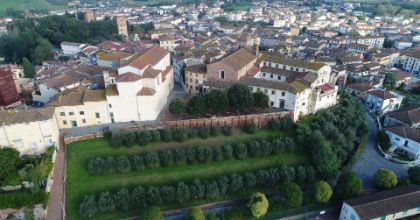At the beginning of the Palio delle Contrade, as it is said, there is an ancient contest, called Game or Palio della Lancia, which took place many centuries ago in the city of Fucecchio. According to some, the aim of the game was to insert the spear, in fact, in the iron rings walled in the facades of ancient buildings, usually used to tie the horses. According to others, the Giostra planned to insert the spear three times in a ring attached to the end of a string hanging from a bigot full of water.
With the passing of time were organized real horse races in the streets, both religious and civil festivals, ancient custom of almost all the countries of Tuscany. "Singles won," says Riccardo Cardellicchio, "but from time to time the contrade insignia came out. Sporadic initiatives in the eighteenth and nineteenth centuries."
In 1855, just before the spread of cholera in the city, the annual Palio della Lancia took place, but it was not organized for the next eight years, due to the historical and political contingencies of Italian Unity. The last contest of this kind, according to documents that are still found in the local historical archive, was held on June 14, 1863; it was followed by the final burial of the Joust.
In 1980 it was the Fratres Blood Donor Group, with President Tommaso Cardini, to revive the dispute, organizing a pony race to promote blood donation. The decision to organize a real Palio delle Contrade, with horses mounted by jockeys, was taken the following year. After an initial presence of sixteen districts, the number dropped definitively to the current twelve, and in 1995 the Palio, now grown much compared to the first modern edition, passed into the hands of the municipal administration.
The journalist and writer Riccardo Cardellicchio writes about the rebirth of the Palio:
